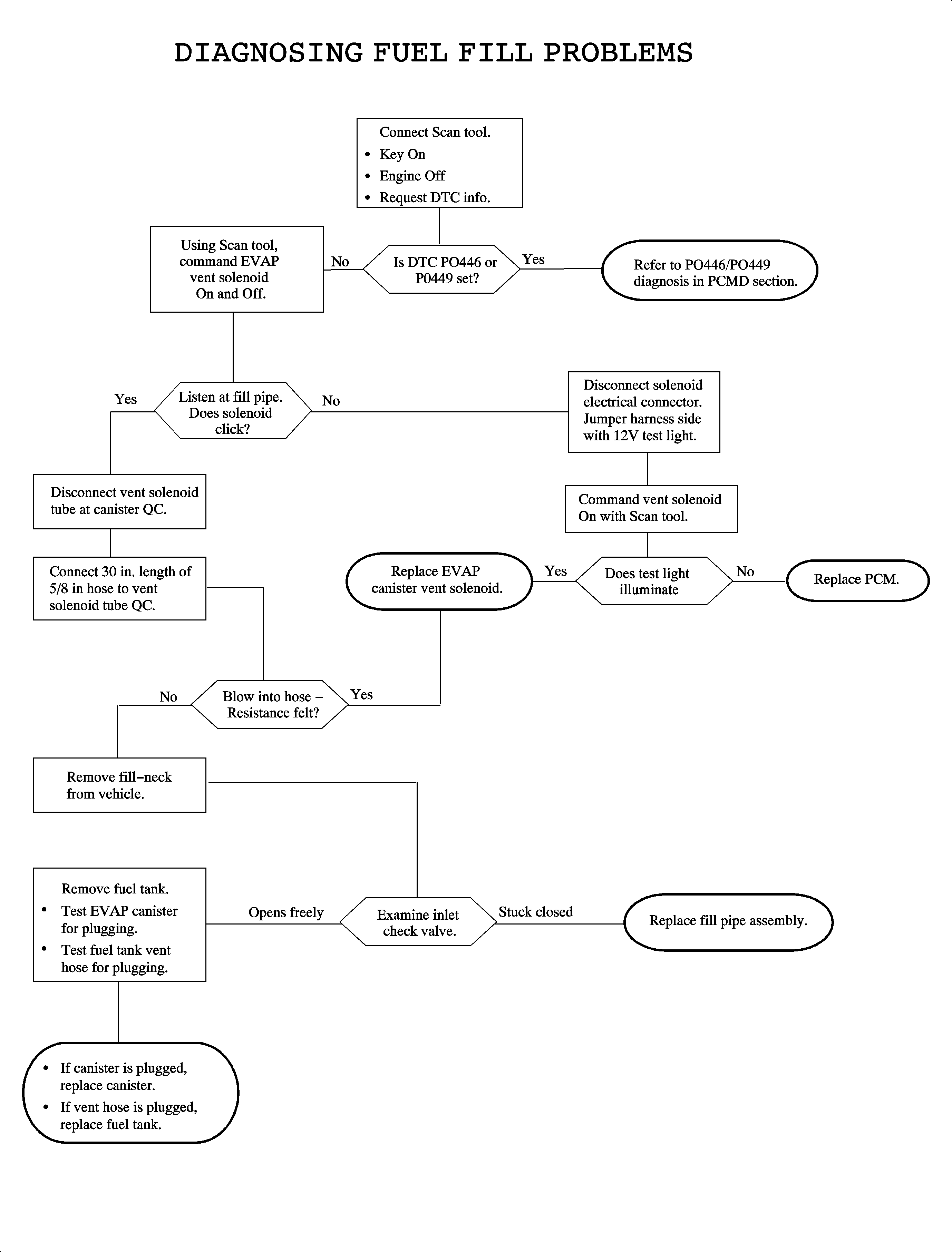Problems associated with refueling the vehicle such as premature shutoffs of
the fill nozzle or inability to dispense fuel at a high rate are related to 2 areas:
| • | A blocked inlet (i.e., the fill pipe) |
| • | The primary vent path is blocked or severely restricted. |
Redesign of the fuel fill inlet and vent path was done as a result of Onboard
Refueling and Vapor Recovery (ORVR) requirements.
Diagnostic Aids
Symptoms of a blocked inlet path will include:
| • | An inability to dispense fuel at anything above a trickle rate, if that.
|
| | Fuel evident at fill head. |
| • | Nozzle shutting off virtually immediately, since no volume of fuel can
be dispensed. |
| | Suspect a stuck inlet check valve. Check for operation with siphon hose. |
Symptoms of a blocked/restricted vent path include:
| • | A premature shutoff of fill nozzle at medium to high flow rates. |
| • | Nozzle shutting off after dispensing only 0.8-1.1 L (0.2-0.3 gallons).
May be less with higher temperatures and/or higher RVP fuels. After a few seconds
of waiting, this process can be repeated. |
| • | Connect the scan tool and look for DTCs P0446 or P0449. |
| • | Verify vent path during refueling. Connect the scan tool and go into
enhanced evaporative emission (EVAP) tests to control vent solenoid and read fuel
tank pressure sensor. |
| - | Normal sensor voltage is 1.4-1.6 volts. It will decrease
with rising tank pressure (during refueling) and during refueling will stabilize
just below 1 volt. |
| - | If voltage drops rapidly below this value towards 0.2-0.3 volts
during refueling, this is indication that the major vent path is blocked. |
| - | Check vent path from EVAP vent solenoid backwards to isolate problem component
(vent solenoid, vent pipe/hose, canister, fill limit vent valve (FLVV), etc.) |


